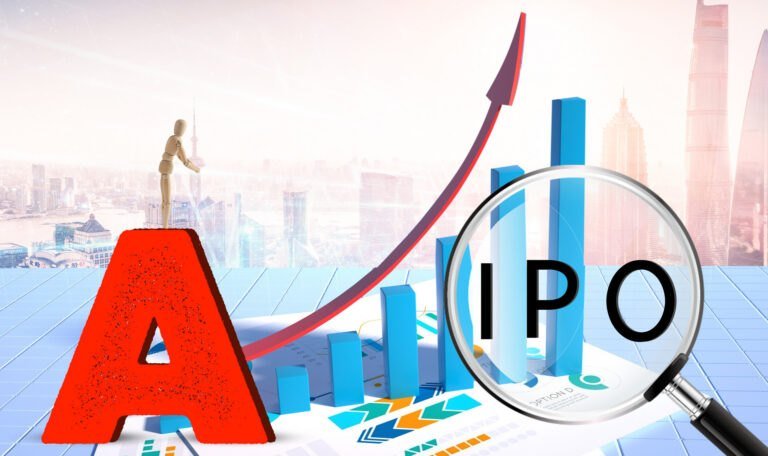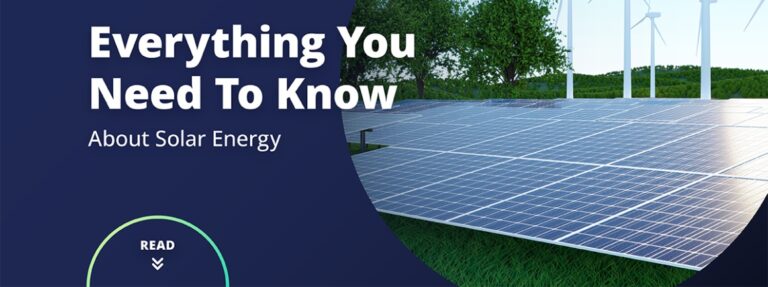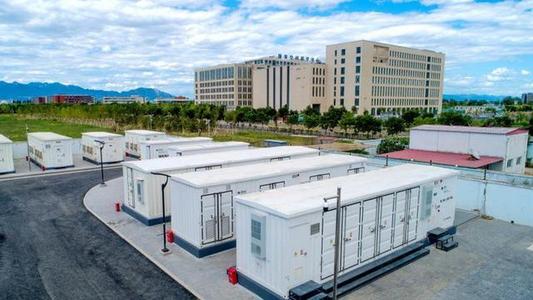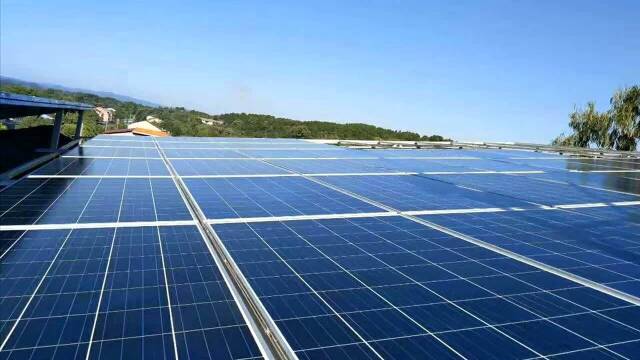“Price falling” was a main word in the China photovoltaic industry in 2023.
Throughout the year, whether it was silicon materials, silicon wafers, solar cells, or modules, during last year prices had significant declines compared to the beginning of the 2023.
In 2023, the domestic prices for silicon materials, silicon wafers, solar cells, and modules witnessed respective declines of 66.91% (monocrystalline dense materials), 48.66% (M10 silicon wafers), 38.37% (G12 silicon wafers), 55.00% (P-type 182 solar cells), 53.75% (P-type 210 solar cells), 48.01% (P-type 182 monocrystalline modules), and 46.45% (P-type 210 monocrystalline modules).
While fluctuations in industry chain prices are not uncommon in the history of photovoltaic industry development, the substantial decline in 2023 is triggering a new round of intense competition. Combined with the accelerated trend of photovoltaic technology iteration, this has led to a “hot and cold” situation for the industry chain over the past year.
As 2024 begins, the latest quotes for silicon materials and silicon wafers continue a slight downward trend, and module prices are still sliding.
In 2024, the domestic photovoltaic industry will still need to undergo a process of reaching a low point in prices and accelerating capacity clearance. This will put the cost capabilities of various enterprises to the test.
Revert to 2023
Utilizing data from the InfoLink Consulting, the data reveals that in the silicon material segment, the average transaction price of monocrystalline dense material dropped from 2,290.6 EUR/ton at the beginning of the year to 757.9 EUR/ton at the end of the year, a decline of approximately 66.91%. As an upstream segment of the photovoltaic industry chain, silicon material prices exhibited a continuous “incessant decline,” despite a brief uptick in the first quarter of 2023 due to increased demand following the recovery of work rates post the Chinese New Year. Specifically, in the first two months before the start of 2023, influenced by the increased purchasing demand following the recovery of work rates post the 2023 Spring Festival, the average transaction price of monocrystalline dense material rose from 2,288 EUR/ton to 2,795.6 EUR/ton. Subsequently, from February to early March, the silicon material market remained active, reaching its highest point with an average transaction price of 3,086.2 EUR/ton.
However, starting in the second quarter of 2023, silicon material prices entered a continuous “freefall” mode. In the first week of June, the average transaction price of monocrystalline dense material fell below 1,000 EUR/ton.
Since the second half of 2023, the dark cloud of price decline has continued to hover over the silicon material market. Under concerns of overcapacity, the beginning of 2024 saw an unfavorable start for silicon material prices, continuing the downward trend.
It is noteworthy that with the expansion of N-type product capacity, the demand for N-type materials surged. The overall price of N-type silicon material maintained a certain price difference compared to P-type material. Therefore, in the first week of 2024, the average transaction price of N-type silicon material remained stable compared to the previous period.
In the past year, silicon material has experienced the largest price decline among the segments of the photovoltaic industry chain. Following closely is the solar cell segment, with average transaction price declines of 71.50 EUR/W for P-type 182 cells, 69.69 EUR/W for P-type 210 cells, and 76.79 EUR/W for N-type TOPCon cells in 2023.
P-type cells went from a price level of 0.1 EUR/W at the end of the year, starting from 0.2 EUR/W at the beginning of the year.
During March to mid-May 2023, the average transaction price of P-type solar cells surpassed 0.13 EUR/W due to the earlier impact of a slightly tight supply of upstream silicon wafers, causing silicon wafer prices to rise. However, later, with the continuous decline in silicon wafer prices, the solar cell segment could not withstand cost pressures, and prices began to loosen.
2023 witnessed an accelerated transition in solar cell technology from P-type to N-type. Starting from May, N-type TOPCon cells began to see concentrated quotations, maintaining a certain price difference compared to P-type cells. It is noteworthy that, influenced by the rapid increase in N-type cell capacity, despite the price difference between N/P-type cells, the price of N-type cells was halved in just half a year, with a decline of nearly 60%. This provides greater impetus for the accelerated conversion of N/P-type cell capacity in 2024.
The overall price decline in the silicon wafer and module segments in 2023 was less than 50%. Nevertheless, the prices in these two segments have already reached low levels. Particularly, module prices show signs of continuing to set historical lows.
In the silicon wafer segment, the price trends for two mainstream size specifications (M10 and G12) in 2023 closely resemble those in the silicon material segment, reflecting their direct impact from changes in silicon material prices. Interestingly, the price trends of the two silicon wafer product specifications are divergent. G12 silicon wafers, besides experiencing a significantly smaller price decline than M10, maintain a relatively higher premium space in terms of size-adjusted prices due to the balanced supply and demand relationship.
Since the third quarter of 2023, the price decline in the module segment has become one of the hottest topics in discussions on industry chain price phenomena.
Since November 2023, when the opening bid prices for centrally procured components by the state-owned enterprises fell below 0.13 EUR/W, the prices in the module segment appeared chilling. By December, the average transaction price of domestic P-type modules officially dropped below 0.13 EUR/W. Furthermore, the price decline for N-type TOPCon modules exceeded 48%, approaching an average transaction price of 0.13 EUR/W.
Some photovoltaic industry insiders pointed out that module prices below 0.13 EUR/W are a result of intensified industry competition. For the photovoltaic industry, which has always prioritized cost reduction and efficiency improvement, this signifies that future competition will become increasingly fierce.
In reality, at the beginning of 2023, module prices were still at 0.23 EUR/W. In less than ten months, prices have plummeted by more than half. According to the latest data from InfoLink Consulting, the descent in module prices has not yet ceased. In the first week of 2024, the execution orders for domestic P-type 182 monocrystalline modules ranged from 0.11 to 0.13 EUR per watt, and the prices for 210 monocrystalline modules in ground projects were also descending, slipping to 0.11 to 0.13 EUR per watt.
It is noteworthy that on January 9, 2024, the opening bid for China Energy Construction’s 42GW module centralized procurement project revealed that among the quotes from 55 companies, the lowest comprehensive bid for P-type modules was 0.105 EUR/W, while the lowest bid for N-type modules was 0.113 EUR/W.
Where is the bottom?
The prices in the solar power industry depend on how much capacity is made into the market at each stage. In the years 2022 and 2023, China saw rapid growth in the manufacturing capacity of key elements in the solar power industry chain. In 2022, the production of polysilicon, silicon wafers, cells, and modules in China increased by over 55% compared to the previous year. The first ten months of 2023 also marked a historic high in production across these elements, with significant growth rates.
According to incomplete statistics, the production capacity of various elements in the solar power industry chain in China surpassed 800 GW in 2023, showing a growth of over 60% compared to 2022. The production capacity of solar cells and modules expanded the most in 2023, driven by integrated and cross-border capacity upgrades.
The increase in capacity has two main effects. Firstly, the surge in quantity and decrease in prices in 2023 squeezed profit margins at various manufacturing stages. Secondly, the concerns about price declines continued into 2024, prompting a need to clear excess production capacity.
Looking back at 2023, the profit situation in different parts of the solar power industry varied. The silicon material segment faced challenges, the silicon wafer segment had a tough time, while the cell and module segments showed different outcomes. Some companies leading in the transition to N/P-type technology enjoyed the benefits of technological advancements.
However, with substantial capacity starting in 2024, there is a growing industry interest in when the solar power industry will hit its bottom in 2024. As the industry reshuffling cycle repeats in 2024, companies are adopting different strategies for capacity expansion.





